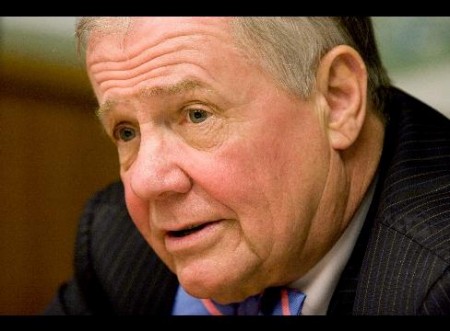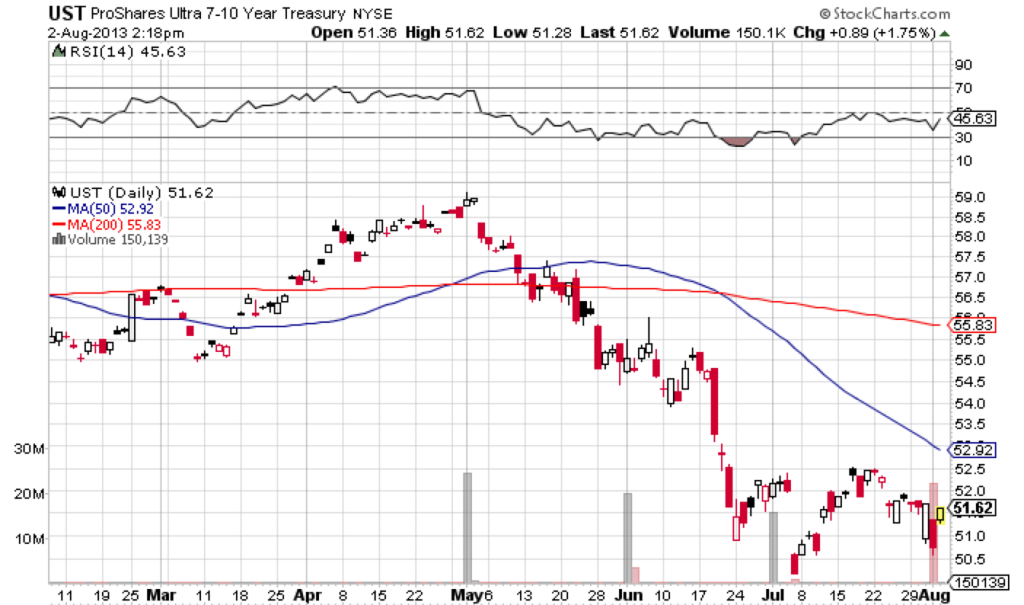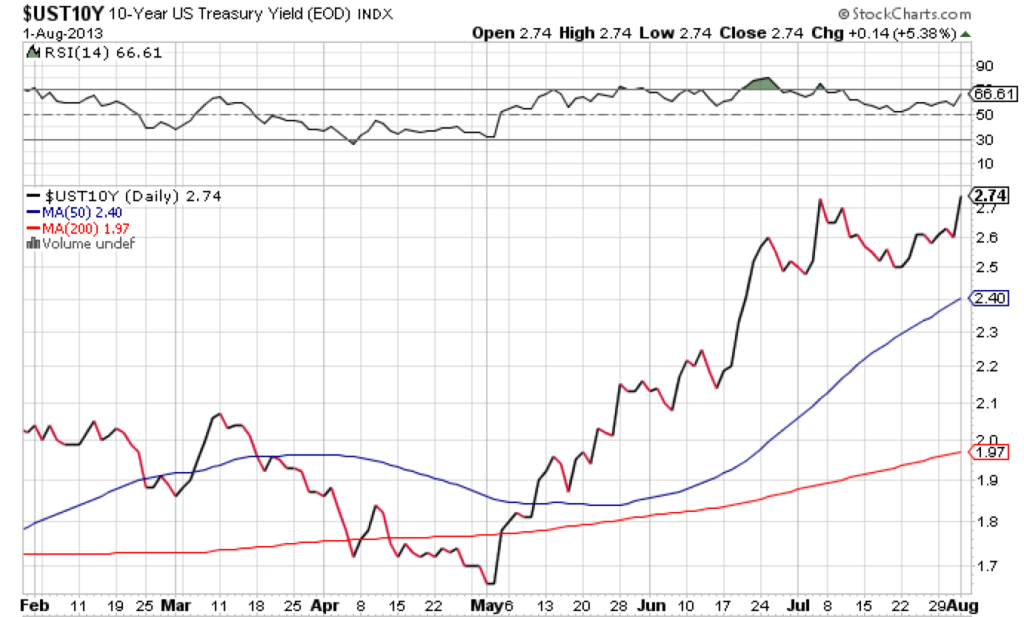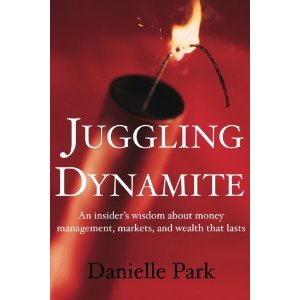Timing & trends
The Equities Bull Market is about to End & it will be a big Mess
Speaking to attendees at the fourth annual Innovative Alternative Investments conference in Denver yesterday, Jim Rogers said “I’ve never seen a bull market [in any asset class] that goes on forever,” Rogers said. “There may be one, but I’ve never heard of it.”
Speaking of the current bull market in U.S. equities, Rogers told advisors, “Enjoy it, but be prepared. I do know it will end, but not when. We’re getting close to the end.”
The day that happens won’t be a pretty one. “When it ends it will be a big mess,” he continued. “This will be worse than 2001 and 2008-2009.” – via The Financial Asvisor Magazine
GOLD : could fall to $900 an ounce, we have not had the final bottom yet
“Gold has gone up 12 years in a row, which is terribly unusual for any asset, so it would be an anomaly if there was not a correction.”Rogers believes the correction should be around 50% of the peak (which was $1,950 in September 2011), which is where he gets his $900 figure from.“I fully expect the bull market to end in a bubble some day, and some day is not here yet,”“if it falls or if it gets down [to $900], then I hope I will be smart enough to buy more.”I don’t think in a recent The Financial Times interview we’ve had the final bottom in gold but we must be nearing it in sugar. Sugar is down 75% from its all-time high – there’s not much in the world that is down 75%.” –
Jim Rogers on Commodities, The Agriculture Boom, & Perilous times ahead
Friday, July 26, 2013
Sunday, August 4, 2013
Jim Rogers: Bubbles can go on and on. Hard to tell when it pops
About Jim Rogers
 Jim Rogers started trading the stock market with $600 in 1968.In 1973 he formed the Quantum Fund with the legendary investor George Soros before retiring, a multi millionaire at the age of 37. Rogers and Soros helped steer the fund to a miraculous 4,200% return over the 10 year span of the fund while the S&P 500 returned just 47%.
Jim Rogers started trading the stock market with $600 in 1968.In 1973 he formed the Quantum Fund with the legendary investor George Soros before retiring, a multi millionaire at the age of 37. Rogers and Soros helped steer the fund to a miraculous 4,200% return over the 10 year span of the fund while the S&P 500 returned just 47%.

Something happened last week that few retail investors noticed.
And it should wake up misinformed bulls.
Take a look at the following chart of the benchmark 10 Year Treasury bond:

In the last few months, the 10-year bond price has continued to fall. Now take a look at this:

The yield on the benchmark 10 Year Treasury bond has now shot passed 2.7% – a dramatic rise of 1% in less than 3 months.
If this trend continues, it could be the tipping point that pops the stock market bubble.
Let me explain.
The 10 Year US Treasury yield is the benchmark indicator – not just for the U.S., but also for the rest of the world.
The higher the yield on the 10-year, the higher the interest rates worldwide.
And in the last few months, this number has soared more than 60% – its greatest percentage move since 1962.
Higher interest rates makes housing less affordable and among other things, will slow GDP growth. Given that the housing sector is already being affected, as noted by the continued decline of mortgage applications, the 10-year yield continues to prove itself as a consistent indicator.
The decline in mortgage applications clearly indicates the effect of the 10-year yield. Mortgage rates in the U.S. have already jumped from 3.4% in early May to 4.4% today. When the 10-year yield goes up, so do mortgage rates.
And the drastic decline in mortgage applications follows.
Not only do rising rates cause a major slowdown to economic growth – especially during a time when growth is needed – they can have an adverse effect on the financial markets.
Ed Note: Read more about:

 Michael Interviews Danielle Park, one of Michael’s favorites in telling people how to handle their money. Danielle is the author of the best selling myth-busting book “Juggling Dynamite: An insider’s wisdom on money management, markets and wealth that lasts.” She also runs the popular daily financial blog: www.jugglingdynamite.com. Michael begins the interview by asking Danielle her view on markets.
Michael Interviews Danielle Park, one of Michael’s favorites in telling people how to handle their money. Danielle is the author of the best selling myth-busting book “Juggling Dynamite: An insider’s wisdom on money management, markets and wealth that lasts.” She also runs the popular daily financial blog: www.jugglingdynamite.com. Michael begins the interview by asking Danielle her view on markets.
{mp3}mtaug3hour1{/mp3}


In my article, “Why A Stock Market Bubble Is Forming Right Now” written in early May, I described how unprecedented levels of excess liquidity combined with declining liquidity preference were pointing to a rising probability of the formation of a stock market bubble. In mid-May, I followed this up with an article entitled, Beware Long-Term Damage From Stock Market Bubble Forming Now, in which I said the following:
The thesis of this article is that given the current course of events, broad stock market indices such as the S&P 500, Dow Jones Industrials and Nasdaq could very well rise by 30% or more within the next 6-12 months. However, such spectacular gains, far from acting as a harbinger of economic health (as most assume), would only be symptomatic of highly damaging relative price distortions that are ravaging the US economy from within.
Some investors may be able to profit from such circumstances on an intermediate term time frame (0-12 months) even if the long-term implications are less sanguine.
In both of these articles, and in the comment sections I made two things clear:
1) Stock valuations were not currently indicative of a bubble.
2) It has become increasingly likely that stock prices will rise sharply in the next 12 months in such a manner and to such an extent that would be indicative of a bubble.
In this article, I provide a progress report on this thesis.
Valuations Becoming A Bit Stretched, Not Yet Near Bubble Territory
Based on an S&P 500 index level of 1690, the forward 12-month P/E based on IBES bottom up consensus for operating earnings is 15.1. This compares to the historical average since 1976 (inception date for IBES estimates) of 12.9.
Based on trailing 12-Month (TTM) EPS, the current P/E is at 18.47 versus long-term historical average since 1871 of 15.5.
These two numbers cannot be entirely taken at face value as indicators that the stock market is dangerously overvalued. I will cite only three reasons here. First, the forward P/E average is downward biased due to the start date as well as by inflation-induced earnings distortions that artificially inflated GAAP earnings during the mid 70s and early 80s. Second, with respect to the TTM P/E average, for various reasons I cannot expand upon here, I question the validity of historical P/E data prior to 1960 for purposes of comparisons with current P/Es. In this regard, suffice it for now to say that the world is radically different today than it was between 1871 and 1914 and than it was during the war eras of 1914 through 1960. Third, current P/Es should not be compared to aggregate averages, but to historical P/Es at similar stages of the macroeconomic and earnings cycles. Finally, other valuation methods are superior to simple historical P/E comparisons and these other methodologies should be taken into account when valuing stocks.
Without entering into details regarding all of the various methodologies that should be utilized to value stocks, it is my view that stock valuations are currently within or even slightly above a broad range that could be considered “normal.” I would characterize valuations as starting to become only slightly “stretched” – sort of like when you first start to feel a bit of tension when stretching a rubber band. Valuations are NOT yet at levels that can be considered indicative of a bubble.
It is my position that a bubble is forming, not that a bubble is yet fully formed. It is also my position that it is most useful to predict a bubble, not to merely announce one after it has already been formed – much less after it has already burst. Finally, when I speak of “prediction” I use this term in an expected return context. – i.e. the probability distribution indicates that the potential rewards of acting upon my bubble thesis outweigh the potential risks.
Will The Fed Allow A Bubble To Inflate?
A critical element of my thesis is that while the Fed does not desire asset bubbles to form, it will as a practical matter be unable to prevent them from forming under current circumstances, given its dual mandate to promote price stability and full employment.
I believe that many officials within the Fed are keenly aware of the risk of asset bubble formation. Indeed, I believe that it was this concern rather than any concerns about CPI inflation that drove the Fed to initiate its warnings about “tapering.”
Having said this, the prevention of asset bubbles is of secondary importance to the Fed’s monetary policy considering both its legal mandate as well as the political realities within which the institution must operate. When push comes to shove, if the Fed must choose between monetary accommodation to facilitate the reduction of high unemployment and asset bubble prevention, it will always chose the former so long as the Fed believes that consumer price inflation is contained. If core measures of consumer price inflation were accelerating above the Fed’s targeted levels and/or unemployment were at low levels, the Fed would have sufficient legal and political “cover” to proceed to act affirmatively to prevent asset bubbles via its broad and somewhat vague mandate to promote financial stability. As it stands, in the face of high unemployment and low inflation, the Fed is virtually obliged by its legal mandate as well as political realities to maintain an accommodative monetary stance.
Therein lies the risk of asset bubble formation. The Fed can and will try to “jaw-bone” to the effect that it is concerned about the formation of asset bubbles. However, as a practical matter, as long as the Fed fails to withdraw the unprecedented liquidity it has injected into the system, it will be serving as an “enabler” of asset bubble formation.
And to be clear, “tapering” does not involve any withdrawal of excess liquidity from the system – it merely involves reducing the pace at which excess liquidity is being added to the system. Therefore, the policy of “tapering” is functionally an “enabler” of asset bubble formation.
If It Is Not Yet A Bubble, How Can One Know One Is Forming?
In a future article, I will lay out a formal typology for identifying a fully-formed stock market bubble. However, I will preview my belief that bubbles are not merely a matter of extreme overvaluation (as some suppose). Various other fundamental, technical and psychological elements must be considered in determining the existence of an asset bubble. In this regard, the following questions would be part of a “checklist” to be consulted:
1. Fundamentals. Does the change in fundamentals such as GDP growth, earnings growth and real interest rates support the magnitude of stock price increases above and beyond established historical means?
2. Technical. Is the price action normal, or does it indicate abnormal exuberance?
3. Psychological. Are there signs that investors are becoming too complacent about risk?
I will address these questions briefly.
First, in the past 8-9 months, expectations of GDP and earnings growth have been steadily declining while real interest rates as indicated by the yields of long-term treasury bonds (TLT) and TIPS (TIP) have been rising. This notable deterioration in fundamentals has occurred at the same time that stock valuations have been rapidly rising above their historical mean levels (although still below bubble levels). This notable disconnect between the change in fundamentals and the change in stock prices is a sign of potential of a bubble formation.
Second, even within the context of a prolonged uptrend, normal price action is characterized by volatile and seemingly irregular patterns of rises and falls. Rises will be followed by periodic and seemingly unpredictable “back-filling” and “consolidation” prior to resuming an uptrend. The rise in the stock market since last fall has been extraordinary in the slope of its ascent, its persistence, the extraordinary decline in volatility and lack of correction or consolidation. This abnormal price action is indicative of a potential bubble in formation.
Third, asset allocation data indicate that many retail and institutional investors remain cautious in their allocation to equities relative to historical norms. This is an indication that a bubble has not yet fully formed. However, various flow of funds data indicate that the caution exhibited by previously wary retail investors is now in the process of being “thrown to the wind.” Furthermore, there is a narrative that is becoming conventional wisdom that provides a clear warning sign of bubble formation: The “nowhere else to go” narrative. Just do a Google search of “nowhere else to go stocks” and you will see just how prevalent this meme has become. This is a clear indicator that many investors are investing in equities because they feel that they do not have a “choice,” not because they have rationally determined that such investment is warranted based on fundamentals. This building psychological pressure driven by fear and greed is an indicator of potential bubble formation.
Taken individually, none of these indicators is sufficient to confirm the formation of a stock market bubble. However, taken in combination, these three indicators, along with the fact that valuations have risen rapidly above historical means, support the thesis that a stock market bubble may be forming.
Conclusion
Stocks’ values are not in bubble territory at this time. However, there are a number of fundamental, technical and psychological indicators that strongly support the thesis that a bubble is currently in the process of forming.
How should investors deal with this? The correct approach will vary from individual to individual. Aggressive traders may choose to “ride the bubble” hoping to bail out of the market right before the bubble bursts. Other investors may choose to wait this out, just as many waited out the tech-led bubble in 1999 or the housing and mortgage-securities led bubble in 2007, based on the premise that better long-term buying opportunities will present themselves in the aftermath of the bursting of the bubble. Both approaches are potentially valid.
My own position is clear and remains unchanged since August of 2012: Probabilities favor further sharp rises in stock prices in the intermediate term, defined as the next 0-12 months. Stock indices such as the S&P 500, Dow Jones Industrial Average and the Nasdaq and their respective ETFs such as (SPY), (DIA) and (QQQ) could rise by 20%-30% or even more during this time. Furthermore, since May I have emphasized that the risk of bubble formation further skews reward/risk to the upside on an intermediate term basis. At the same time, it is my view that a scenario of rising asset prices driven by excess liquidity and declining liquidity preferences, far from constituting a positive indicator of economic health, is symptomatic of long-term pathologies that are developing beneath the surface in economic and financial conditions. There is no contradiction whatsoever in these two outlooks; they are indeed fundamentally linked. Investors should not confuse predictions about the likely level of stock prices in the intermediate term with predictions about long-term economic conditions. Investors should plan their asset allocation accordingly.
About James Kostohryz
 James Kostohryz has accumulated over twenty years of experience investing and trading virtually every asset class across the globe.
James Kostohryz has accumulated over twenty years of experience investing and trading virtually every asset class across the globe.
Kostohryz started his investment career as an analyst at one of the US’s largest asset management firms covering sectors as diverse as emerging markets, banking, energy, construction, real estate, metals and mining. Later, Kostohryz became Chief Global Strategist and Head of International Investments for a major investment bank. Kostohryz currently manages his own investment firm, specializing in proprietary trading and institutional portfolio management advisory.
Born in Mexico, Kostohryz grew up between south Texas and Colombia, has lived and worked in nine different …More












